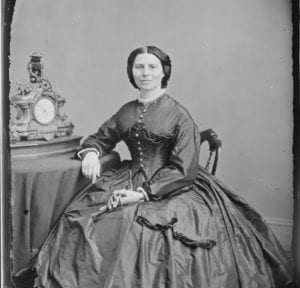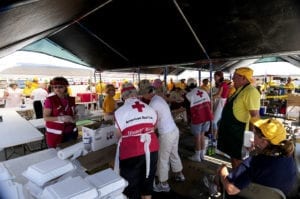Mel Diomampo
Houston, TX

The American Red Cross (ARC) is an independent, neutral organization ensuring humanitarian protection and assistance for victims of armed conflict and other disasters. Based on the Geneva Convention of 1949, its work primarily consists of responding to emergencies, promoting international humanitarian law, and implementing it.
Red Cross
Stimulated by the global Red Cross network in Europe, Clara Barton and her associates founded the ARC in Washington, D.C. on May 21, 1881.1 Barton was its first director. The ARC conducted domestic and overseas disaster relief efforts for the United States Army during the Spanish-American War and World Wars I and II.2 It introduced national first aid, water safety, and public health nursing programs; and encouraged many Americans to volunteer in the community, resulting in an increase of the number of the local chapters from 107 in 1914 to 3,864 in 1918.3 Post-war actions focused on aiding veterans and further enhancing projects for safety training, accident prevention, home care for the sick, and nutrition education.
The American Red Cross continues to bring hope to people in times of crisis. During the September 11th terrorist attacks, ARC responders were present in New York, at the Pentagon, and outside the town of Shanksville in rural Pennsylvania. The ARC also established the Liberty Fund4 for victims and their families, and by accumulating 564 million dollars5 in cash reserve has been able to extend benefits for affected individuals. The Red Cross has also deployed workers to all major disasters, such as Hurricane Charley in Florida in 2004, the 2004 Indian Ocean earthquake and tsunami, Hurricane Katrina in 2005 on the U.S. Gulf Coast, the Haiti earthquake in 2010, Typhoon Haiyan in the Philippines in 2013, and Hurricane Harvey in 2017 in Houston, Texas. The organization has always aimed to cooperate with communities in order to assist them in rebuilding their lives after a natural disaster or other human suffering.

Red Cross workers and Baytown mobile kitchens serve local residents after Hurricane Ike. Mike Moore. 28 September 2008. From the FEMA Photo Library.
Besides its system of disaster relief programs, the ARC has also expanded the field of blood services. The organization spearheaded blood donation drives in the mid-twentieth century with such success that the impact is still felt today. In 2012, the ARC supplied approximately forty percent of the donated blood in the United States,6 which was used for patients with trauma, anemia, burns, and chronic diseases. It has vast experience in the collection, testing, storage, and distribution of blood. The ARC also facilitates transplantation through its Tissue Services Program. Thousands of donor families have given the gift of tissue donation to more than a million transplant recipients. Moreover, being a leader in the plasma industry, ARC provides more than one-quarter of the nation’s plasma products. Red Cross Plasma Services ensures reliability, cost-effectiveness, and safety of plasma products. These efforts have saved countless men, women, and children in need of blood-related services throughout the country.
Whether it is a local flood or a national disaster, the Red Cross is always there to help. Each year the organization benefits 70,000 people in disaster relief, and saves three lives every time a person donates blood. The American Red Cross has evolved through the years and is still known as one of the most important nonprofit organizations today, spreading its humanitarian agenda not only in the United States but to every nation around the world.
References
- Marshall W. Fishwick and the Editors of Silver Burdett, Illustrious Americans: Clara Barton
- Henry P. Davison, The American Red Cross in the Great War. New York: Macmillan, 1919
- https://www.redcross.org/content/dam/redcross/National/history-full-history.pdf
- https://www.redcross.org/about-us/who-we-are/history/significant-dates.html
- Anne Marie Chaker, The Wall Street Journal “The Red Cross Will Use the Entire $564 Million Of Liberty Fund for Sept. 11 Victims, Relief”: November 15, 2001
- Murphy Heather, “Does the Red Cross sell blood?”: March 8, 2012.
MEL ZANDRICK O. DIOMAMPO is an international student from the Philippines pursuing a degree in engineering at Houston Community College. An avid reader and a keen essayist, he enhances his skills in writing by creating compositions about different topics from time to time.
Submitted for the 2019–2020 Blood Writing Contest

Leave a Reply